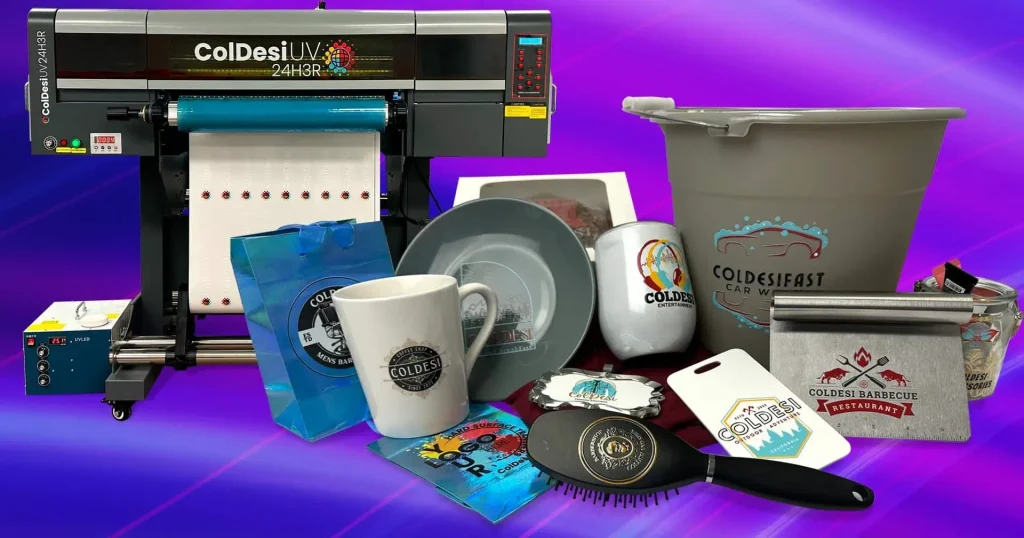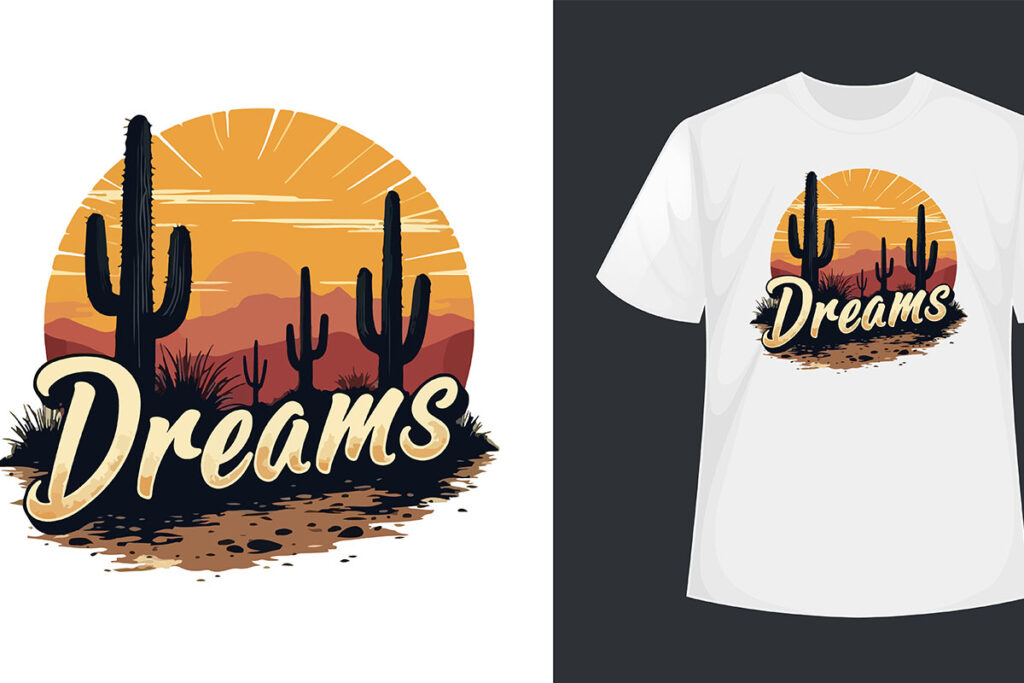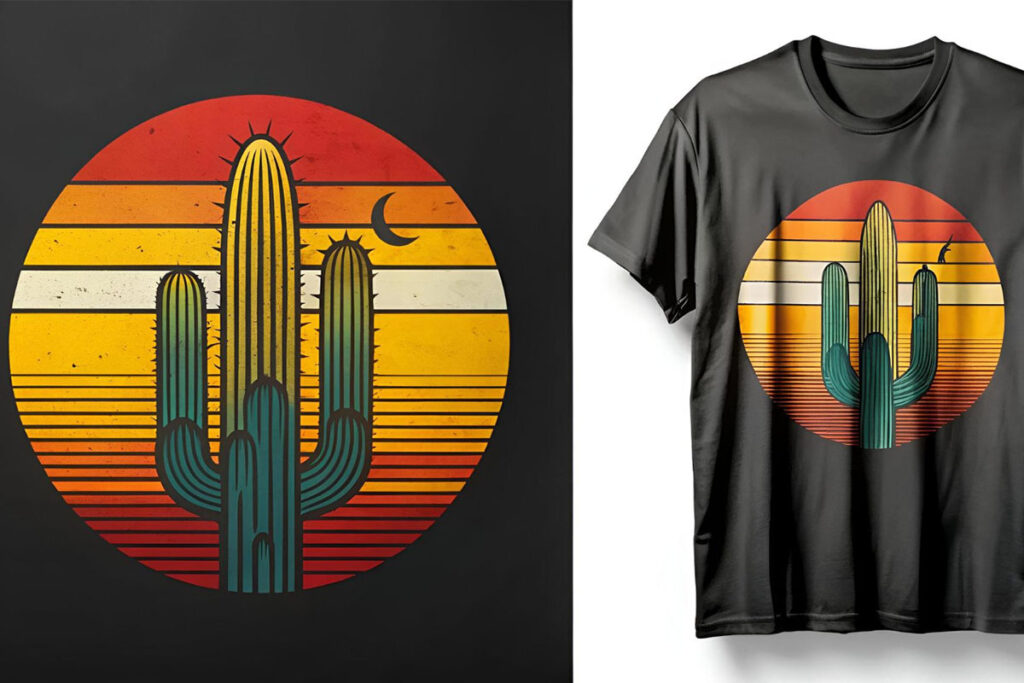UV DTF printing, or ultraviolet direct to film printing, represents a transformative leap in the realm of modern printing technology. This innovative method synthesizes the principles of direct to film printing with cutting-edge UV printing technology, allowing businesses to effortlessly produce high-quality prints on a multitude of substrates, from textiles to metal. The use of eco-friendly UV inks in this process not only enhances the vibrancy and durability of prints but also aligns with today’s growing demand for sustainable practices in the industry. As print-on-demand services thrive and diverse customer needs emerge, the versatility offered by UV DTF printing becomes a game-changing asset for businesses. In this article, we will delve into the mechanics, market trends, and future potential of UV DTF printing and its undeniable impact on various sectors.
In the landscape of contemporary printing solutions, ultraviolet direct-to-film printing offers a fresh perspective and innovative techniques that redefine industry standards. This technique, often referred to as UV DTF, merges direct-to-film methodologies with advanced UV technology, thereby facilitating high-resolution prints across an array of materials. Not only does this process promise exceptional quality, but it also harnesses the power of eco-conscious inks, catering to environmentally responsible projects. As adaptable printing solutions become increasingly essential in sectors like textile and promotional printing, UV DTF stands out for its capacity to meet diverse market demands. This article examines the operational aspects, recent advancements, and trajectory of this groundbreaking printing method.
What is UV DTF Printing?
UV DTF (Direct to Film) printing is a revolutionary technique in the world of printing technology that integrates UV curing with traditional DTF methods. This innovative approach allows printers to apply inks onto a special film, which is then cured using ultraviolet light, ensuring that the results are not only strikingly vibrant but also highly durable. The UV curing process enables the inks to adhere exceptionally well to a variety of surfaces—ranging from textiles to metal—making it a universally adaptable solution suitable for diverse applications.
One of the standout features of UV DTF printing is its ability to produce vivid colors and intricate designs that stand out in a crowded marketplace. This technology eliminates the limitations of conventional printing methods, offering widths and resolution that can captivate audiences. The versatility in substrate compatibility allows businesses to explore new product offerings while meeting customer demands for personalized, high-quality items.
Benefits of UV DTF Printing
The advantages of UV DTF printing are multifaceted, beginning with its unparalleled versatility. Businesses are no longer restricted to specific materials; instead, they can print on everything from fabrics to glass and metal, opening up new avenues for creativity and product development. Coupled with high resolution and color fidelity, UV DTF stands out as an efficient method that both protects the environment and satisfies consumer expectations for quality and speed.
Moreover, UV DTF printing utilizes eco-friendly UV inks that are safe for the environment, aligning with the growing demand for sustainable printing practices. This not only benefits the ecosystem but also enhances a brand’s image as a responsible entity. Additionally, the reduced ink consumption associated with the precise application processes leads to cost savings, making it an economically savvy choice for businesses aiming to expand their offerings without incurring significant overhead.
Understanding UV Printing Technology
UV printing technology represents a significant advancement in the printing industry, utilizing ultraviolet light to cure inks as they are printed directly onto substrates. This instant curing process is crucial as it results in more vibrant colors and durable finishes compared to traditional drying methods. The ability to print directly onto diverse materials further distinguishes UV printing from other techniques, leading to increased adoption across various sectors.
Additionally, UV printing technology has become synonymous with high-quality output. The meticulous curing process ensures that colors remain true and do not fade over time, making it especially suitable for products that require long-lasting impressions. Furthermore, the versatility in substrates allows for innovative applications, from decorative items to industrial uses, demonstrating how UV printing can meet a wide array of market needs.
Recent Developments in UV DTF Printing
Recent developments in UV DTF printing are driven by technological innovations and evolving market dynamics. The race to enhance printing quality has seen breakthroughs in UV ink formulations, which now offer better color reproduction and consistency. Companies like Epson are at the forefront of these advancements, integrating more efficient systems that not only enhance print quality but also speed up production times, thereby meeting the high expectations of contemporary consumers.
Furthermore, the industry’s commitment to sustainability is evident in the growing adoption of eco-friendly UV inks. As companies seek to align their operations with environmental standards, these advances not only improve print quality but also reduce waste and environmental impact. The shift towards sustainable printing practices indicates a broader trend where businesses are prioritizing green operations while meeting customer demands for high-quality, durable products.
Challenges Faced by UV DTF Practitioners
Despite its myriad benefits, UV DTF printing is not without its challenges. One of the primary concerns for businesses looking to adopt this technology is the upfront investment required for equipment and materials. The initial costs can be substantial, which may deter smaller operations from making the leap into UV DTF printing when more affordable alternatives exist. However, the long-term cost efficiencies gained from reduced ink consumption and faster production times often offset these initial expenditures.
Another critical challenge is the need for specific expertise in calibrating the equipment and ensuring optimal curing of inks for adhesion. The desire for high-quality outputs necessitates stringent controls over the printing process, which can pose a learning curve for practitioners unfamiliar with UV technologies. As businesses navigate these challenges, investing in training and development becomes essential for maximizing the potential of UV DTF printing.
The Future of UV DTF Printing
The future of UV DTF printing is bright, with substantial growth projected in this sector over the next few years. As the technology becomes more refined and widespread, businesses will have improved access to high-quality, versatile printing services that can meet diverse market demands. This is particularly true for print-on-demand services, where quick turnaround times and customization capabilities are crucial for success.
Moreover, trends toward more sustainable production practices will continue to spur innovation within the UV DTF space. As consumers become increasingly conscious of the environmental impact of their purchases, businesses that adopt eco-friendly UV inks and practices will likely gain a competitive edge. Companies prepared to embrace these advancements can expect to play a leading role in shaping the future of the printing industry.
Frequently Asked Questions
What is UV DTF printing and how does it differ from traditional direct to film printing?
UV DTF printing is a cutting-edge method that combines ultraviolet (UV) curing with direct to film (DTF) printing. Unlike traditional DTF printing, which uses water-based inks that dry through evaporation, UV DTF utilizes UV light to cure inks instantly as they are applied. This results in better adhesion on various substrates and produces vibrant, durable prints that can withstand diverse environments.
What types of substrates can be used with UV DTF printing?
UV DTF printing is highly versatile, allowing for printing on various substrates including textiles, plastics, metals, and glass. This adaptability makes it an ideal choice for businesses looking to create custom products across multiple industries, from promotional items to garment printing.
Are eco-friendly UV inks available for UV DTF printing?
Yes, eco-friendly UV inks are now available for UV DTF printing. These inks meet sustainability standards, appealing to environmentally conscious consumers and businesses. Using eco-friendly UV inks not only supports green initiatives but also ensures a safe printing process, aligning with modern market demands.
What are the advantages of using UV printing technology in the DTF process?
The advantages of using UV printing technology in the DTF process include enhanced image quality with vibrant colors, faster production times due to immediate curing, reduced ink consumption for cost-effectiveness, and the ability to print on a wider range of substrates. These benefits make UV DTF printing a competitive choice in the printing industry.
How does UV DTF printing enhance production speed for businesses?
UV DTF printing significantly enhances production speed by curing inks instantly with UV light. This eliminates the need for drying time associated with traditional DTF processes, allowing for quicker turnaround and the ability to handle time-sensitive projects effectively. This efficiency makes UV DTF an attractive option for businesses aiming to meet tight deadlines.
What challenges might companies face when adopting UV DTF printing technology?
Companies adopting UV DTF printing technology may face challenges such as the initial investment costs for equipment and eco-friendly UV inks, as well as the need for proper calibration and expertise to ensure optimal curing and ink adhesion. Additionally, smaller businesses may find it difficult to keep up with the technological advancements without adequate training and support.
| Key Point | Details |
|---|---|
| Introduction | Introduction of UV DTF printing and its innovative features, combining traditional DTF with UV curing. |
| Overview | UV DTF printing works on various surfaces, producing vibrant prints with improved adhesion. |
| Market Growth | Projected growth of the global DTF printing market by 2026 driven by adaptability and print-on-demand services. |
| Technological Advancements | Breakthroughs in UV inks and curing technologies are enhancing efficiency and sustainability in printing. |
| Industry Adoption | Companies like Epson are integrating UV DTF into their lineup, indicating increasing industry investment. |
| Benefits | Key advantages include versatility, high-quality output, reduced ink consumption, and faster production times. |
| Challenges | Challenges include high initial investment, precise calibration for ink adhesion, and knowledge requirements. |
| Conclusion | UV DTF printing presents substantial benefits for industries, transforming productivity and print technology. |
Summary
UV DTF printing is revolutionizing the printing landscape by offering versatile, high-quality solutions across various materials and applications. Its unique ability to cure inks with UV light results in exceptional durability and vibrant colors, making it an ideal choice for businesses in sectors like garments and promotional items. While there are challenges such as high initial costs and the necessity for technical expertise, the benefits far outweigh these concerns. As the industry evolves, staying informed about UV DTF printing’s capabilities and adapting to new technologies will be crucial for those looking to capitalize on this innovative method.



